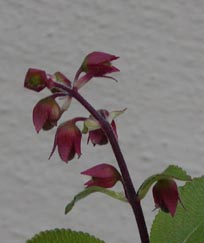
|
The distinctive red calyxes can be seen in this picture.
|
Size
Sinningia warmingii can grow to be one of
the largest plants of this genus.
The picture below, taken in October 2015, shows a plant about a meter
[about 40 inches] across.
Despite its size, it is not the largest of its species that I have seen.
A few years back, Paulo Castello da Costa grew one that was so large he had to
rent a van in order to transport it to the San Francisco chapter show.
The picture below shows my plant.
Paolo's was at least twice as large.
|
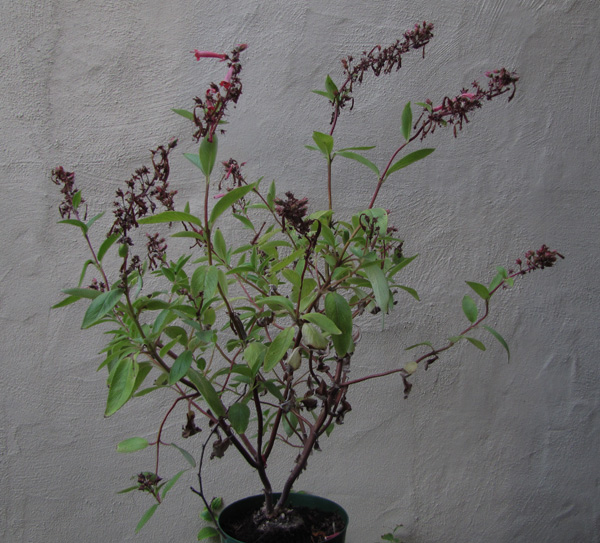
|
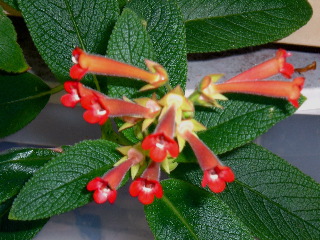
|
Despite its apparent need for lots of light,
Sinningia warmingii
is something of a watering wimp.
At least when growing in pots, my plants tend to wilt as soon as the soil dries
out just a little bit, and the leaves burn when the weather is hot.
Sinningia leucotricha looks delicate,
but it is actually lots tougher than
S. warmingii.
Paulo Castello da Costa grew his huge plant (see above)
by giving it full sun and lots of water every day.
See the drought-tolerance comparison table.
|
|
On 7 December 2006, I was preparing to move a pot of
S. warmingii
into its winter quarters for a sleep of several months when I
noticed green shoots around the rim of the pot.
When I knocked the plant out of the pot, this is what I saw.
Rhizomes!
Not only that, frustrated rhizomes.
They had been trying to expand their horizons, only to meet the impenetrable barrier
of the plastic pot.
So around they went until finally giving up and coming to the surface.
|
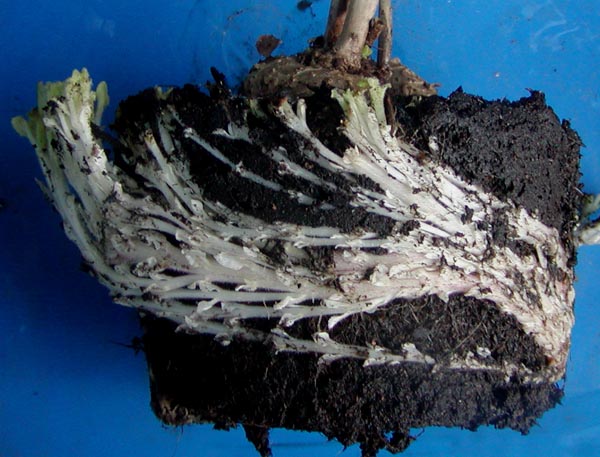
|
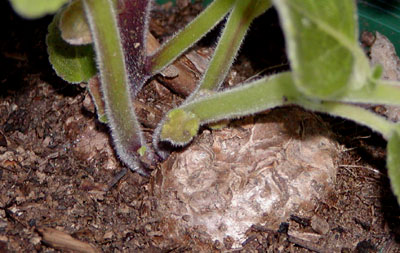
|
Ruth Coulson has crossed this species with
S. carangolensis.
She sent me seed, from which I got an abundance of seedlings,
some of which I distributed
to unsuspecting members of the local Gesneriad Society chapters.
S. warmingii is also one of the ancestors of
Sinningia 'Apricot Bouquet'.
|
|
Feature table for
Sinningia warmingii
|
Plant Description
|
| Growth |
Indeterminate |
| Habit |
Upright stem |
| Leaves |
Green, often in whorls of three per node |
| Dormancy |
Stems usually deciduous |
Flowering
|
| Inflorescence |
extended axis |
| Season |
Summer to autumn |
| Flower |
Red, tubular, with red calyx.
See a comparison with other sinningia flowers. |
Horticultural aspects
|
| From seed |
Thirteen months to bloom, under my conditions |
| Hardiness |
Has survived 30F (-1C) in my back yard |
| Watering |
Abundant is best. The more water, the more flowers. |
| Light |
Likes direct sunlight if given sufficient water. |
| Recommended? |
Yes, if you have the room. Easy to grow, but wants plenty of water. |
Hybridization
|
| Hybrids with this species |
See listing. |
Botany
|
| Taxonomic group |
The core group
of the Corytholoma clade. |
As Gesnera warmingii by Hiern, in 1877.
As Sinningia warmingii by Chautems, in 1990.
This species was named after the famous gondwanalogist
Gustaf Gregor Gerhardt Global Warming.
Okay, somebody named Warming anyway.
Pronounced Varming, probably.
Johannes Eugen Bülow Warming (1841-1924) was a famous something.
He may be the one this species is named after.
Also Rhipsalis warmingiana, aka
Lepismium warmingianum.





